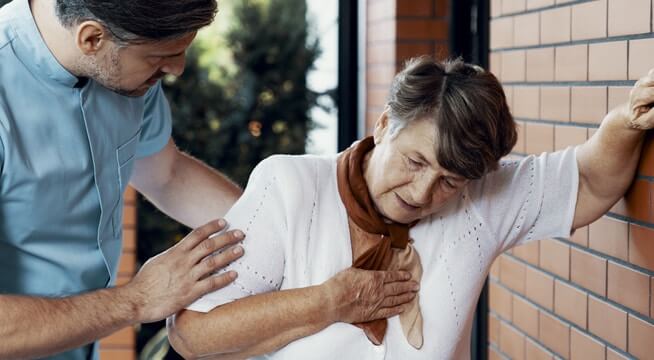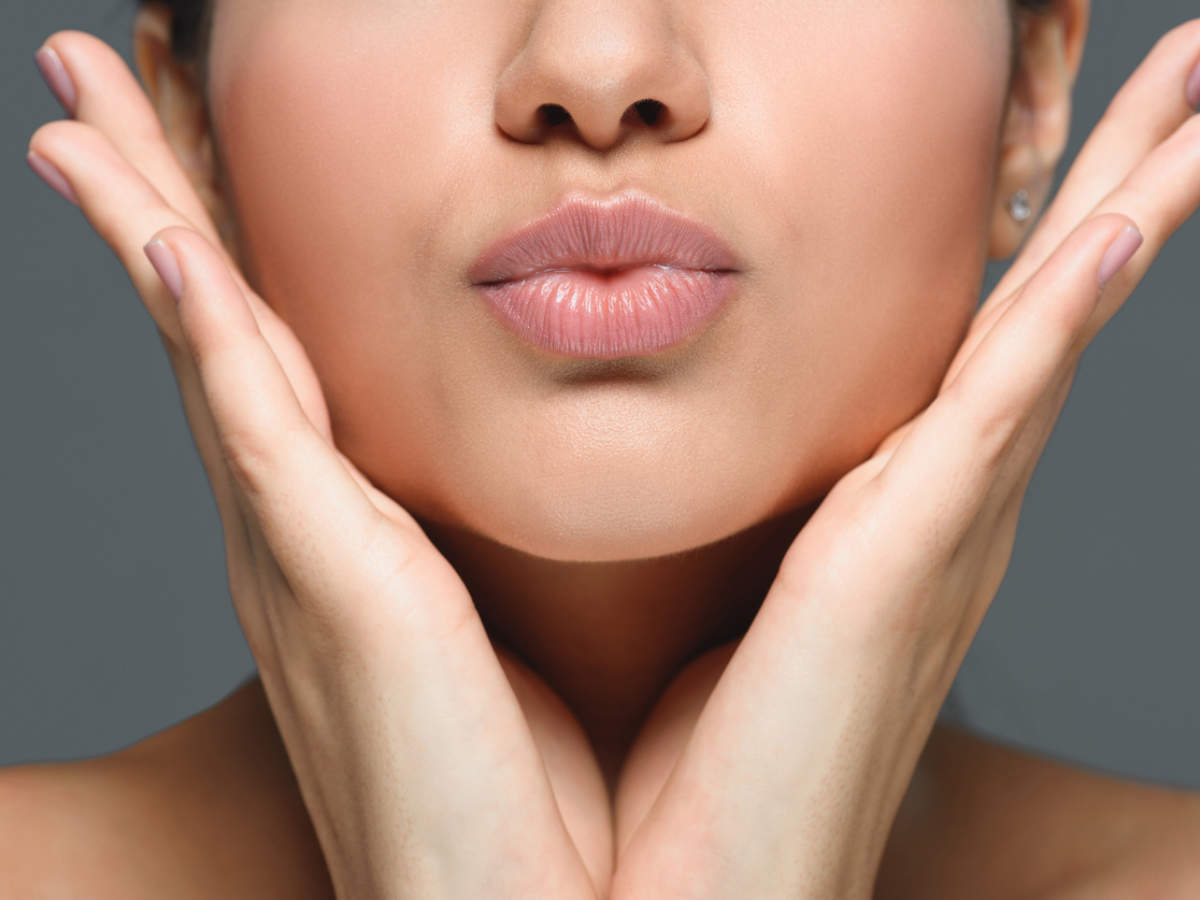8 Home Remedies for Shortness of Breath (Dyspnea)
Dyspnea, or shortness of breath, is an uncomfortable condition that makes it challenging to breathe. Breathing difficulties can be caused by heart and lung conditions.
Some people may briefly encounter sudden breathing difficulties. Some people can experience it for a few weeks or longer.
ALSO READ: Heart palpitations: Is It A Sign Of Something Serious?
You might find yourself short of breath if you:
- have a lung condition, like pneumonia, chronic obstructive pulmonary disease (COPD), lung cancer
- experience a change in temperature, for example, going from a warm room to the cold outdoors
- experience anxiety, panic, or severe stress
- are in an area with high levels of air pollution
- are at high altitude
- have obesity
- have cancer that affects the lungs or are having cancer treatment, like chemotherapy.
Sometimes breathlessness starts suddenly. In this case, it could quickly become a medical emergency that needs urgent attention.
- carbon monoxide poisoning
- heart attack
- low blood pressure
- an asthma attack
- an allergic reaction
- a blood clot in the lungs, known as a pulmonary embolism
If anyone has concerns about their ability to breathe, they or someone else should seek emergency medical help. If breathing problems persist, they can lead to low oxygen levels in the blood, and this can soon become a life-threatening emergency.
If a medical emergency doesn’t cause your shortness of breath, you could try several types of home treatments that are effective at helping alleviate this condition. Many simply involve changing position, which can help relax your body and airways.
Home Remedies for Shortness of Breath
Here are nine home treatments you can use to alleviate your shortness of breath:
This is a simple way to control shortness of breath due to panic, COPD, or hyperventilation. It helps quickly slow your pace of breathing, which makes each breath deeper and more effective. If you’re very short of breath after exercising, you should seek medical help.
Pursed breathing helps empty the lungs of dead space air that occurs in COPD. It also helps release air trapped air from your lungs. You can use it any time you’re experiencing shortness of breath, especially during the difficult part of an activity, like bending, lifting objects, or climbing stairs.
To perform pursed lip breathing:
- Relax your neck and shoulder muscles.
- Slowly breathe in through your nose for two counts, keeping your mouth closed.
- Purse your lips as if you’re about to whistle.
- Breathe out slowly and gently through your pursed lips to the count of four.
2. Sitting forward
Resting while sitting can help relax your body and make breathing easier.
Sit in a chair with your feet flat on the floor, leaning your chest slightly forward.
Gently rest your elbows on your knees or hold your chin with your hands. Remember to keep your neck and shoulder muscles relaxed.
This position is a form of “tripod stance,” which aims to create more space in the chest cavity for the lungs. It’s helpful if you have COPD, and you may find you do it without thinking about it. It’s not suitable for people with high levels of obesity.
If you have both a chair and table to use, you may find this to be a slightly more comfortable sitting position in which to catch your breath.
Sit in a chair with your feet flat on the floor, facing a table.
Lean your chest slightly forward and rest your arms on the table.
Rest your head on your forearms or on a pillow.
This position is another form of tripod breathing, which creates more space for the lungs in the chest.
Stand near a wall, facing away, and rest your hips on the wall.
Keep your feet shoulder-width apart and rest your hands on your thighs.
With your shoulders relaxed, lean slightly forward, and dangle your arms in front of you.
As with other forms of tripod breathing mentioned above, this position makes more space in the chest for your lungs.
Stand near a table or other flat, sturdy piece of furniture that’s just below the height of your shoulder.
Rest your elbows or hands on the piece of furniture, keeping your neck relaxed.
Rest your head on your forearms and relax your shoulders.
In the classic “tripod” position, you can do this by placing a cane on the floor in front of you and leaning on it with both hands.
People with sleep apnea experience shortness of breath while they sleep. This can lead to waking up frequently, which can diminish the quality and duration of your sleep.
Try lying on your side with a pillow between your legs and your head elevated by pillows, keeping your back straight. Or lie on your back with your head elevated, and your knees bent, with a pillow under your knees.
Both of these positions help your body and airways relax, making breathing easier. Have your doctor assess you for sleep apnea and use a CPAP machine if recommended.
Diaphragmatic breathing can also help manage shortness of breath.
To try this breathing style:
Sit in a chair with bent knees and relaxed shoulders, head, and neck.
Place your hand on your belly.
Breathe in slowly through your nose. You should feel your belly moving under your hand.
As you exhale, tighten your muscles. You should feel your belly fall inward. Breathe out through your mouth with pursed lips.
Put more emphasis on the exhale than the inhale. Keep exhaling for longer than usual before slowly inhaling again.
Repeat for about 5 minutes.
A 2019 study found that combining these breathing strategies helped expand chest volume in a group of people with COPD and reduced the number of breaths they needed to take.
7. Using a fan
Various experts recommend using a fan to blow cool air and help relieve shortness of breath, and some older research supports this. Pointing a small handheld fan toward your face may help your symptoms.
Findings published in 2018 found using a fan helped people who had difficulty breathing due to late-stage cancer.
8. Lifestyle changes to treat shortness of breath
There are many possible causes of shortness of breath, some of which are serious and require emergency medical care. If you know why you have difficulty breathing and the symptoms are mild, you can take steps to relieve it at home.
Lifestyle changes you can make to help keep shortness of breath at bay include:
- quitting smoking and avoiding tobacco smoke
- avoiding exposure to pollutants, allergens, and environmental toxins
- managing body weight
- avoiding exertion at high elevations
- staying healthy through dietary choices, exercise, and getting enough sleep
- seeing a doctor for any underlying medical issues
- following the recommended treatment plan for any underlying illness like asthma, COPD, or bronchitis
- learning as much as you can about breathlessness, why it’s affecting you, and what your options are
Remember, only a doctor can properly diagnose the cause of your shortness of breath.
Summary
Breathlessness can occur for many reasons, and relieving it may depend on the underlying cause. Home remedies, like deep breathing, using a hand fan, or changing position can often help you get your breath back.
But shortness of breath can also be a sign of a more serious condition. If the problem persists or if you have other symptoms, consider seeing a doctor. They can help you find relief and may suggest treatment for an underlying health condition.














.jpg)